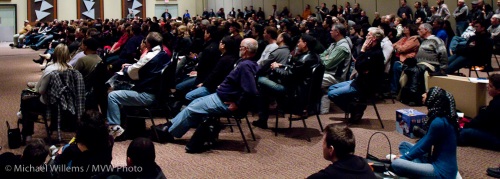When you see back light, you may want to try to use it if you can. That way you do not always get the same old same old.
When I was struck by strong sunlight coming my way at the show the other day, I shot this. I lined up the sun with the edge and used exposure compensation (“the +/- button”) of -2 stops to darken all but the rims:
So what’s the scene?
These people are in fact merely lining up to get some free goat cheese samples. But this light makes it look a tad more dramatic, no?






